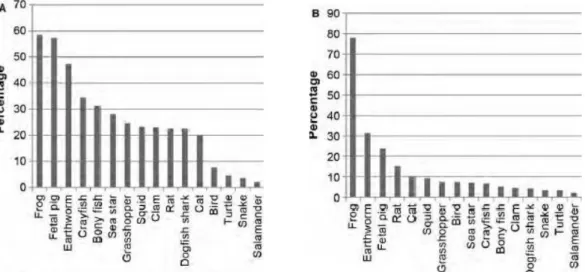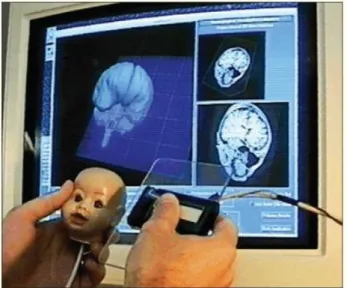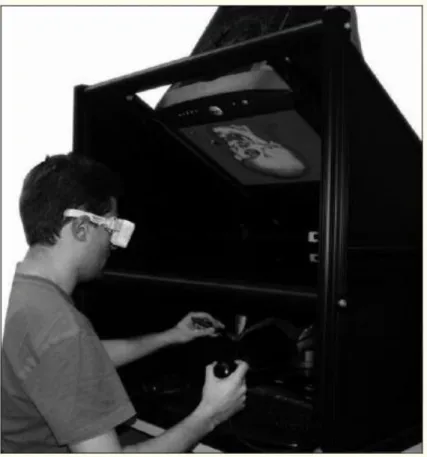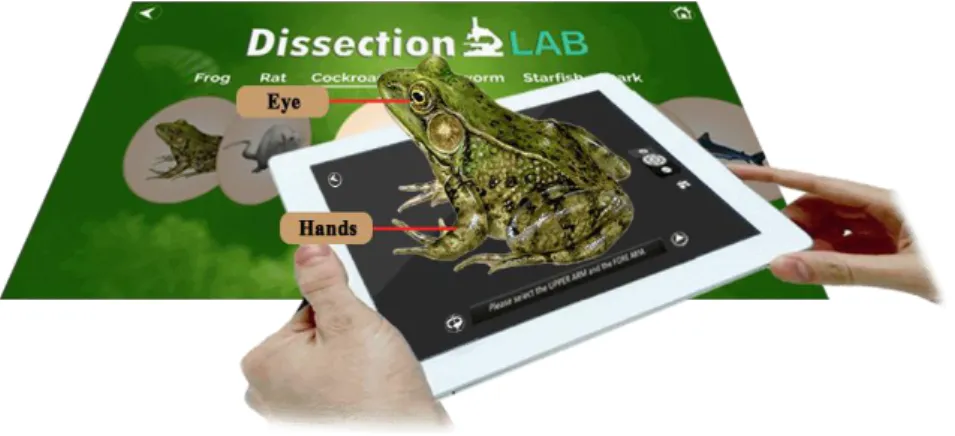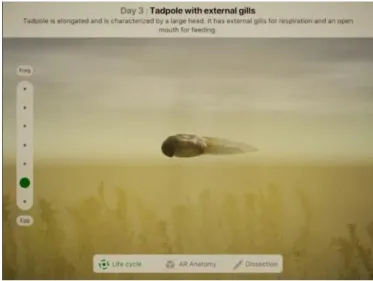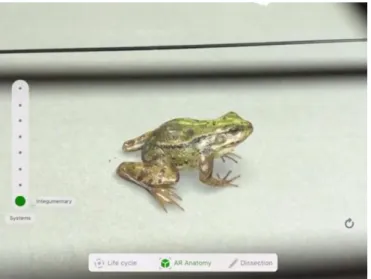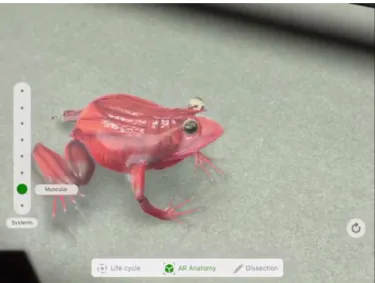I declare that this report titled "Augmented Reality Animal Dissection Mobile App" is my own work, except as cited in the references. I also want to express my gratitude to my family for their support in my studies be it moral, financial or physical. For decades, animal dissection has been used as an educational tool for educators to teach anatomy.
INTRODUCTION
- B ACKGROUND
- P ROBLEM S TATEMENT AND M OTIVATION
- Problem Statement
- Motivation
- O BJECTIVES
- P ROJECT S COPE
- P ROPOSED A PPROACH
The purpose of this project was to develop an application as an alternative to dissection that can serve the needs of teachers who use dissection as an educational tool. There are existing apps that provide similar features, but improvements will be made to meet the needs of teachers. If there are edges in the selected area, the edges will be checked to see if they can be dragged.
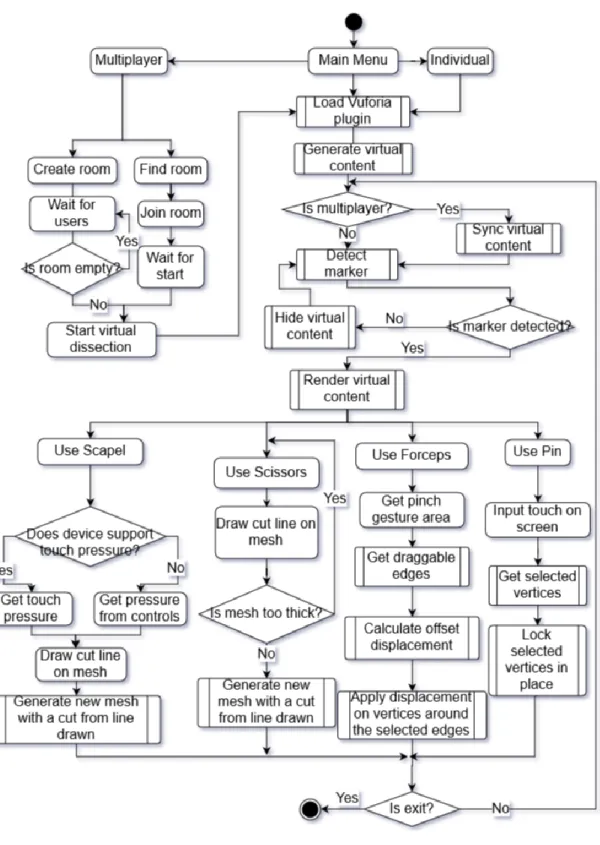
LITERATURE REVIEW
- A D EBATE ON D ISSECTION AND A LTERNATIVES
- A TTITUDE TOWARDS D ISSECTION
- V IRTUAL R EALITY TRAINING IN N EUROSURGERY
- D ISSECTION L AB M OBILE A PPLICATION R EVIEW
- F ROGGIPEDIA I OS A PPLICATION R EVIEW
Oakley (2012) states that the alternatives are not “the same” as traditional dissection, but does this mean that it is less pedagogically effective and the question remains as to whether dissection is ethically justified. The survey found that many students and teachers prefer animal dissection to the alternatives. The research carried out only relates to neurosurgery, but if virtual reality could play such a large role in the teaching and practice of neurosurgery, which is considered a very complex field, why could not the same alternative be used for classroom dissections, which is less complex compared to neurosurgery.
The external anatomy screen (Figure 2-7) shows a 3D model of a frog that has frog anatomy labels. Once all the tags are displayed, it will move on to displaying the deeper parts of the frog's anatomy. The functions of the 3 screens apply not only to the frog, but also to the other animal species shown on the main screen (Figure 2-5).
On this screen, users can navigate through the frog's life cycle stages by selecting the dots on the left side of the screen. There are 3 buttons at the bottom of the screen that allow users to navigate to the other screens, namely the AR Anatomy screen and the Dissection screen. On the left are buttons that allow users to navigate through the external anatomy to the internal anatomy of the frog.
The display allows users to see from the integumentary system to the frog's digestive system.

METHODOLOGY
S OFTWARE D EVELOPMENT M ETHODOLOGY
Develop a second version of the app by adding new tool features to the first version. Develop a third version of the app by adding a multiplayer system to the second version. Creates a function to create a room on the network using the device's IP address and port number.
Create function to ensure that the virtual dissection state is synchronized with all users in the same room.
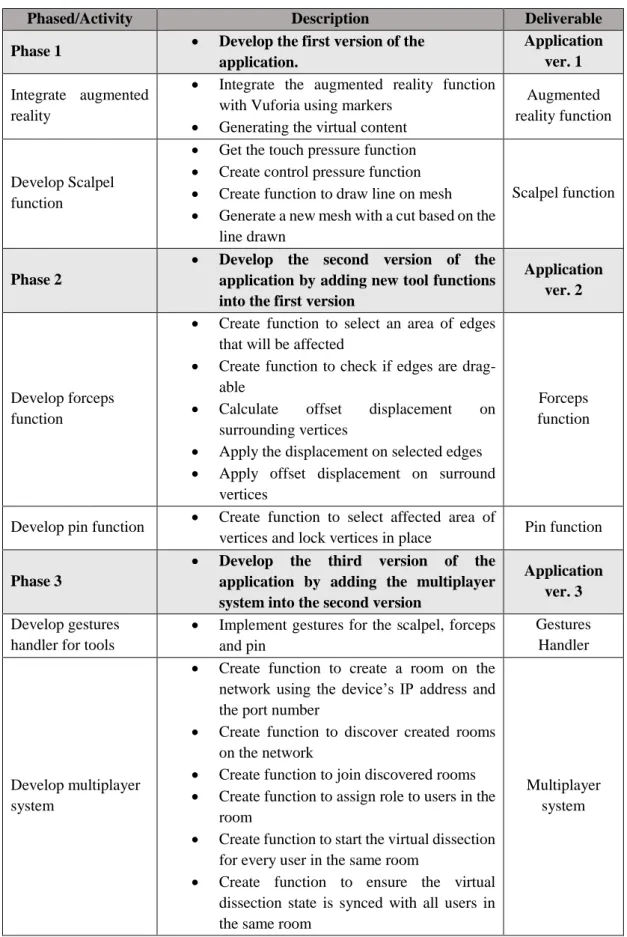
T OOLS U SED
S YSTEM D ESIGN
- System Overview
- Module Descriptions
For example, the ability to pull the skin of the cut area with forceps. The drawn line is used to determine which mesh vertices are selected by finding the vertices closest to the line. The vertices will then be compared to the vertices of the default cut line.
The points can then be used to find the nearest vertex for each of the points. The drawback of this method is that the time complexity of the operation will be O(n*m), which means that the time required will increase quadratically depending on the number of vertices (n) and the number of points (m). The figure above shows how the mesh is affected when the "bone" of the skin flap on the right rotates towards the point of contact (white dot).
In this case, the calculation of the tangent must take the axis into account. Therefore, it is important to specify the world on-axis in the calculation according to the local axis of the mesh. The concept of the pin tool module is to prevent interactions of the pin tool with any interactable parts of the 3D model.
The power of the pin tool module begins by receiving the touch input from the user.
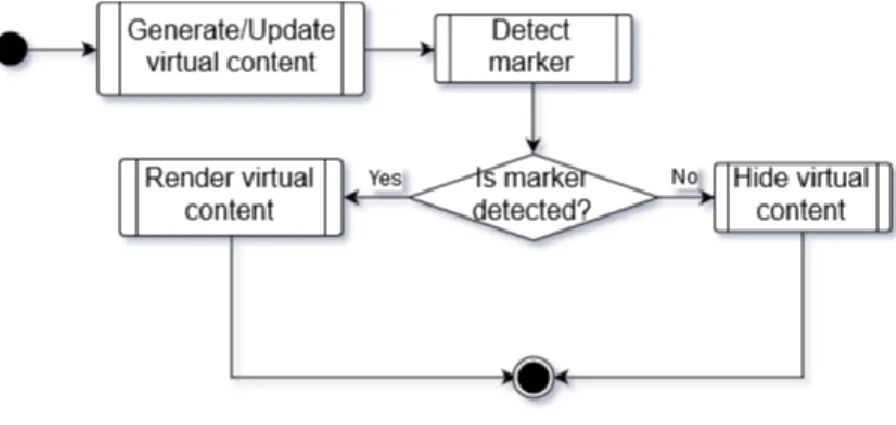
U SER I NTERFACE D ESIGN
The multiplayer lobby screen contains a list of rooms currently broadcasting on the network. A "Create Room" button at the bottom of the screen to allow the user to host a room and broadcast the rooms on the network connected by the device. Users can click on a room listed to join the room and the application will redirect users to the "Wait Screen" shown in Figure 3-21.
It contains an input field for the room name and another input field for the password. Users can leave the room name field and password field blank if they do not want to set any room name and password. If the room name field is empty, a default name will be generated based on the room order (eg Room 1).
Each player's name contains an "L" icon to the right which is used to indicate that the user is the instructor. There are two buttons at the bottom which are the "Exit Room" and "Start Dissection" button. It contains a list of the player's name and an "Exit Room" button in the left-hand corner to exit the room.
The instructor of the room will be indicated by the "L" icon placed on the right side.
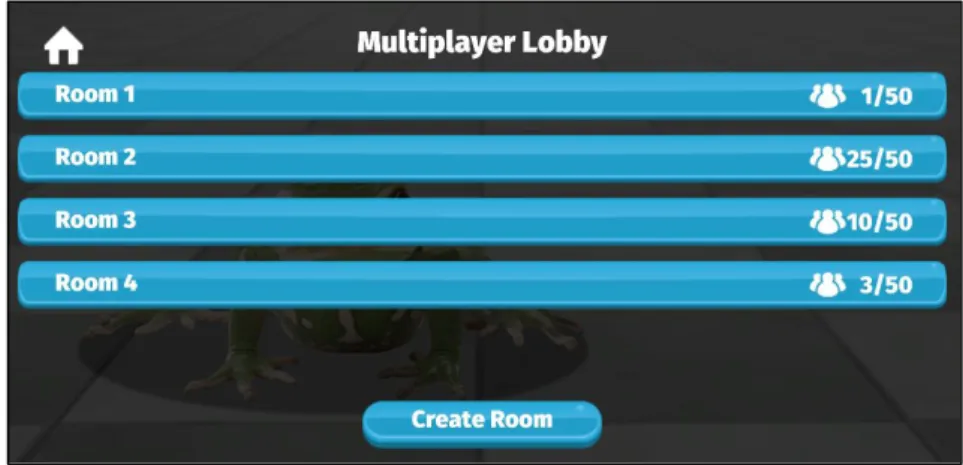
I MPLEMENTATIONS
- Software Environment
- Pre-Implementation Processes
- Implementation of Modules
To allow movement in different areas of the mesh, leg braces must be fitted to the mesh. For the purpose of this project, a simple rig is assigned to the flaps of the cavity described in the previous section. For example, if an object contains 3 cuts, there will be 3 CutVertices object in the list of the VertexLibrary.
If you uncheck the "Use name server" box, other servers can be used instead of Photon's default server. Once the Photon View component has been added to a game object (for example, the frog's flap), it starts synchronizing the changes made to the game object with other clients. Specifications can be made for the Photon View component to sync only specific game object properties.
In this project, the frog's transformation properties, skin flapping and organs are synchronized. Both the pin and the scalpel will emit a beam from the touch position instead of the mouse position. When the touch ends (when the user lifts their finger from the screen), the tools will stop running.
The image above shows the implementation progress of the Gesture Management module in this project as explained above.
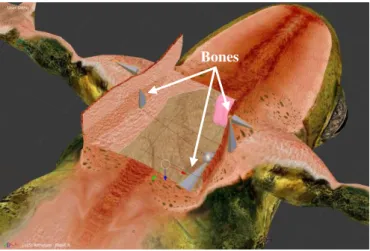
DISCUSSIONS AND VERIFICATION
D ISCUSSION ON I MPLEMENTATION T ECHNIQUES
- Scalpel interactions
- Modelling of the dissected skin flaps
- Forceps and bones interactions
As shown in Chapter 3, Section 3.5.2, bones are assigned to the dissected skin flaps which allow the skin flaps to be moved. In Figure 3-23 of Chapter 3, Section 3.5.2, there is only one bone assigned to each flap, the way the skin is modeled is too thick, and the edges around the edge of the skin flaps are filled, which gives rise to a few problems that will be discussed in Section 4.3. Instead of assigning bones to the center of the skin flap, bones can be assigned to multiple parts of the skin flap.
Figure 4-3 shows the implementation of a thinner skin flap with more bones assigned, this creates a more flexible and skin-like interactivity. The reason the skin flap needs to have thickness is because the dorsal surface falls in Unity, where the unseen side of the mesh is not rendered (usually opposite where the normal points). The way the tweezers interact with the skin flaps is by rotating the selected skin flap bone towards the mouse cursor or touch area.
The figure above shows the inverse kinematics system assigned to the legs of the skin flap. The inverse kinematics system used here is the "FastIK" asset obtained from Unity's asset store. The way the inverse kinematics works is by pointing the tip of the leg at the rectangular blocks that are the controllers for each set of legs.
With this, tweezers can now interact with rectangular controller blocks instead of skin sheets.
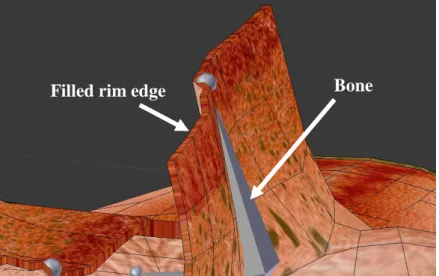
S YSTEM V ERIFICATION T EST P LAN
- Unit Testing
- Integration Testing
- System Testing
The forceps tool is tested to ensure that it can only pick up the interactable objects (eg the skin flap, organs). The pin tool is tested for the ability to pin the pincer-interactable objects and it is also tested to unpin any pinned objects. The Create Room button is tested to ensure the functionality of creating a Room object with specified name and password.
Clicking one of the listed rooms is tested to be able to open the room list panel and close the lobby panel, and the Start Dissection button is tested to load the multiplayer dissection scene. Each drawing line, pinch gesture, and long press are tested to ensure that each gesture produces a different register on the keyboard. Augmented reality has been tested to work in both the Dissection screen and the multiplayer Dissection screen.
All dissection tools have been tested and can work as intended with each other. The multiplayer system is tested to check if it synchronizes the dissection scene with all connected users. System testing is performed when all units have been tested and are working as intended.
Gestures are tested to ensure that it performs the functions of the tools according to the specified gestures.
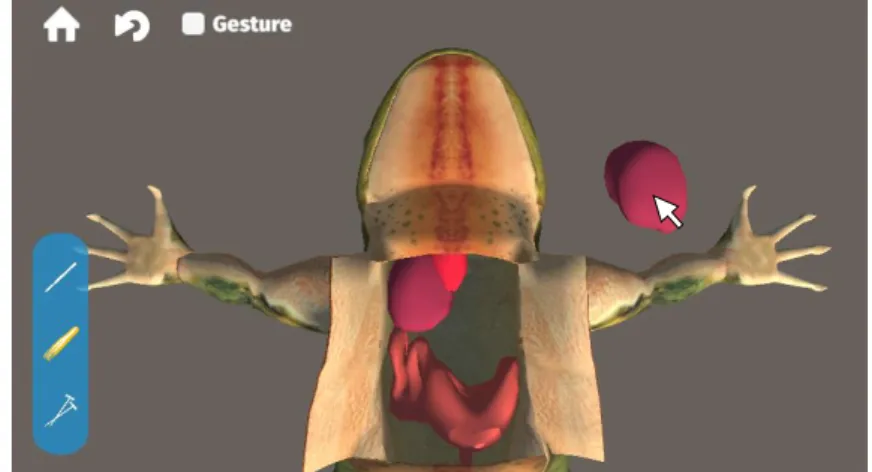
I MPLEMENTATION I SSUES AND C HALLENGES
CONCLUSION
P ROJECT R EVIEW
F UTURE I MPLEMENTATIONS
BIBLIOGRAPHY
Required originality parameters and UTAR approved limits are as follows:. i) Overall Similarity Index is 20% and below, and. ii) Matches from separate sources listed must be less than 3% each, and (iii) Matching texts in continuous block must not exceed 8 words. Note: Parameters (i) – (ii) exclude citations, bibliography, and text matches that are less than 8 words. Note Promoter/Candidate(s) is/are required to provide a soft copy of the full set of the Originality Report to the Faculty/Institute.
Based on the above results, I hereby declare that I am satisfied with the originality of the end-of-year project report submitted by my student(s) as stated above. Form Title: Supervisor's comments on the originality report generated by Turnitin for final year project report submission (for undergraduate programs).
